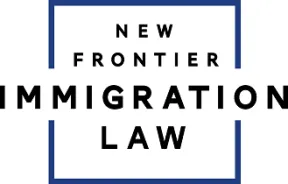
The Child Status Protection Act (CSPA) is a highly useful piece of law, although it is not the most well-known. Like many immigration-related laws, few people in the general population know about the CSPA, but its impact is potentially profound. The CSPA benefits Green Card applicants who “straddle the age definition” by turning 21 during the application process itself. In this post, we will discuss the dilemma which is addressed by the CSPA, and then discuss in detail how this law applies in reality.
- The Dilemma of “Aging Out”
When it comes to applying for lawful permanent residency, or a “Green Card,” age is a highly important designation. An applicant’s age can have a decisive impact on his or her probability of acceptance. The Immigration and Nationality Act (INA) provides the key definition of a “child” for immigration purposes. Under the INA, a child is defined as a person who both unmarried and below the age of 21. If a person applies for a Green Age while he or she is a child, but then becomes an adult before the application is approved, this can produce several undesirable outcomes. For instance, the application can take longer to process, or the applicant may need to submit a new application to begin with. In the worst possible scenario, the applicant may suddenly be ineligible to obtain a Green Card specifically because of their change in age status. When a person experiences a change in age status from child to adult under these circumstances, this is commonly referred to as “aging out.”
The U.S. Congress passed the CSPA as a means to combat this phenomenon of aging out. The aging out phenomenon was largely occurring because of administrative backlogs; many people felt that someone losing eligibility under these circumstances would be unfair.
- The Application of CSPA and Eligibility Requirements
The CSPA can “preserve” a person’s status as a child for Green Card application purposes. In other words, if a person is covered by the CSPA, then he or she will still be treated as a child even if he or she reaches adulthood during the application process.
The key point is that the CSPA is only applicable to certain types of people. However, even if a person can potentially be covered by the CSPA, that person still has to meet certain eligibility requirements.
Here are the types of people who can potentially be covered by the CSPA:
· Derivative asylees
· Derivative refugees
· Diversity Immigrant Visa derivative applicants
· Employment-based derivative applicants
· Self-petitioners under the VAWA and derivatives
· Immediate relatives
· Family-sponsored preference principal and derivative applicants
For a free case review , call
Again, these are only those for whom the CSPA can potentially cover. Applicants will still need to meet certain eligibility requirements to actually be covered. The eligibility requirements break down according to the particular type of applicant. Let’s look at an example: if the applicant is an immediate relative, or a petitioner under the VAWA, the CSPA can apply, but only if the applicant remains unmarried. If the applicant marries during the application process, prior to approval, then he or she can lose child status if the aging out process kicks in.
Contact New Frontier Immigration Law for More Information
The other applicant types have similar eligibility requirements. For more information, or if you need advanced counsel on this particular law, give New Frontier Immigration Law a call today at 623-742-5400.




